Malawi
April 3: Cholera vaccination kick starts
Cholera vaccines are in town for the start of a vaccination program aimed at curbing the spread of the disease following the deadly, destructive cyclone that hit southern Africa nearly three weeks ago.
Cyclone Idai ravaged Mozambique and Zimbabwe killing over 700 people. Malawi also got affected by its impact. An offshoot of the cyclone has been the incidence of a cholera outbreak.
It has so far claimed two lives with over a 1,000 cases of infection within a space of four days. At last count some 1,400 people were affected.
The United Nations children’s emergency fund, UNICEF; delivered about 900,000 doses of the vaccine in Beira, the Mozambican city worst affected by the disaster.
WHO #cholera vaccination expert Kate Alberti watches as the shipment of 900,000 doses of cholera vaccines funded by
— World Health Organization (WHO) (WHO) April 2, 2019gaviarrive in Beira, #Mozambique.
The vaccination campaign run by the MoH with support from WHO, UNICEF,MSF, ifrc,save_children, is due to start tomorrow pic.twitter.com/QIKo8cEbYy
April 1: Cholera cases hit 1,000 mark
Cholera has infected at least 1,052 people in Mozambique’s cyclone-hit region, the health ministry said on Monday in a new report, marking a massive increase from 139 cases reported four days ago.
The new data represents on average more than 200 cases of new infections each day.
Although hundreds have been taken ill with cholera since last week, only one death has been reported so far, tallies compiled by the ministry showed.
A mass vaccination campaign is due to start on Wednesday as authorities and aid workers are scrambling to avert an epidemic more than two weeks after a devastating cyclone slammed Mozambique.
Some 900,000 doses of oral cholera vaccines were due to arrive in the cyclone-battered Beira city on Tuesday, from the global stockpile for emergency, according to the World Health Organisation (WHO).
“Vaccination against cholera begins on Wednesday in Beira,” a senior Mozambican health official Ussein Isse said.
The central city of Beira is the worst affected, accounting for 959 out of the total 1,052 cases.
The city of more than half-a-million people recorded 247 cases in 24 hours between Sunday and Monday morning.
Cholera is transmitted through contaminated drinking water or food and causes acute diarrhoea.
The numbers of cholera cases is expected to rise due to the increasing numbers of people reporting to health centres with symptoms, said the WHO in a statement.
“The next few weeks are crucial and speed is of the essence if we are to save lives and limit suffering,” WHO chief for Africa, Matshidiso Moeti, said in the statement.
Cyclone Idai killed more than 700 people across Mozambique, Malawi and Zimbabwe and hundreds of thousands have been left homeless – many of whom have been forced to use dirty water supplies. At least 518 of those deaths have occurred in Mozambique.
More than 146,000 people have been displaced from their homes by the cyclone and subsequent floods are are sheltering in 155 sites across four provinces of Sofala, Manica, Zambezia and Tete, according to the UN.
AFP
March 30: Update on Cyclone Idai impact
Hundreds of thousands of people are in need of food, water and shelter after Cyclone Idai battered Mozambique, Zimbabwe and Malawi.
As of Saturday, at least 746 people had been reported killed by the storm, the flooding it caused and heavy rains before it hit. Following is an outline of the disaster, according to government and United Nations officials:
MOZAMBIQUE
Cyclone Idai landed on the night of March 14 near the port city of Beira, bringing heavy winds and rains. Two major rivers, the Buzi and the Pungue, burst their banks, submerging entire villages and leaving bodies floating in the water.
- People killed: 501
- People injured: 1,523
- Houses damaged or destroyed: 99,317
- Crops damaged: 669,903 hectares
- People affected: 1.85 million
ZIMBABWE
On March 16, the storm hit eastern Zimbabwe, where it flattened homes and flooded communities in the Chimanimani and Chipinge districts.
- People killed: 185, according to government. The U.N. migration agency puts the death toll at 259.
- People injured: 200
- People displaced: 16,000 households
- People affected: 250,000
MALAWI
Before it arrived, the storm brought heavy rains and flooding to the lower Shire River districts of Chikwawa and Nsanje, in Malawi’s south. The rains continued after the storm hit, compounding the misery of tens of thousands of people.
- People killed: 60
- People injured: 672
- People displaced: 19,328 households
- People affected: 868,895
REUTERS
Rescue operation called off in Mozambique
President Filipe Nyusi on Thursday told a news conference authorities had called off rescue operations for victims of the deadly cyclone which tore through the central parts of the country on March 15.
He described it as the “worst humanitarian disaster in Mozambique”.
The storm killed at least 468 people and affected 1.85 million.
He said 945 rescuers had taken part in the two-week long search and rescue operation.
“We thank all of them. They are heroes,” he said.
Cyclone Idai smashed into Mozambique nearly two weeks ago, unleashing hurricane-force winds and heavy rains.
It flooded much of the centre of the poor southern African country and then battered eastern Zimbabwe and Malawi.
Meanwhile, the number of confirmed cholera cases in cyclone-ravaged Mozambique climbed sharply to 139 Thursday as authorities prepared to roll out a mass vaccination campaign to stem the spread of the deadly disease.
Counting the cost in Malawi
In Malawi, which was badly hit by flooding and heavy rains in the leadup to Cyclone Idai, the government said arable and livestock farming had been badly affected and that irrigation infrastructure had been damaged.
Agriculture ministry spokesman Hamilton Chimala said around 420,000 metric tonnes of maize had been lost, representing roughly 12 percent of the country’s forecast output of 3.3 million metric tons in the 2018/19 farming season.
Impoverished Malawi is regularly hit by food shortages, so the damage to the country’s staple grain is a cause for concern.
As of Wednesday, 713 people in Mozambique, Zimbabwe and Malawi had died in the tropical storm and in the heavy rains before it hit.
Battling cholera
Mozambique will start a cholera vaccination campaign next week in areas ravaged by Cyclone Idai, the World Health Organization (WHO) said on Thursday, after five confirmed cases were detected.
David Wightwick, a senior member of the WHO’s response team in Beira, told reporters that seven clinics had been set up in Mozambique to treat cholera patients and that two more would be ready soon.
“We have 900,000 doses of oral cholera vaccines which are coming in on Monday, and we will start a vaccination campaign as soon as possible next week,” Wightwick said.
“The first objective is to control the outbreak,” he said, warning though that “there are other places that remain cut off”.
Cholera is endemic to Mozambique, which has had regular outbreaks over the past five years. About 2,000 people were infected in the last outbreak, which ended in February 2018, according to the WHO.
But the scale of the damage to Beira’s water and sanitation infrastructure, coupled with its dense population, have raised fears that another epidemic would be difficult to put down.
Wightwick could not confirm whether there had yet been any deaths from cholera in Mozambique.
March 27: Mozambique confirms cholera cases
The fears of waterborne diseases became a reality on Wednesday as Mozambique confirmed five cases of cholera around the badly damaged port city of Beira after a powerful cyclone killed more than 700 people across a swathe of southern Africa.
The relief focus has increasingly turned to preventing or containing what many believe will be inevitable outbreaks of diseases like malaria and cholera.
“We did the lab tests and can confirm that these five people tested positive for cholera,” Ussein Isse, a senior Mozambican health official, told reporters. “It will spread. When you have one case, you have to expect more cases in the community.”
Health workers were also battling 2,700 cases of acute watery diarrhoea – which could be a symptom of cholera – Isse said, adding the government had organised a treatment centre for cholera in Beira hospital.
The World Health Organization is dispatching 900,000 doses of oral cholera vaccine to affected areas from a global stockpile. The shipment is expected to be sent later this week.
The death toll in Mozambique from Cyclone Idai has risen to 468, a Mozambican disaster management official said. That takes the total number of deaths in Mozambique, Zimbabwe and Malawi above 700 people, with many more missing.
REUTERS
As of Tuesday, at least 686 people had been reported killed by the storm, the flooding it caused and heavy rains before it hit. Following is an outline of the disaster, according to government and United Nations officials:
MOZAMBIQUE
Cyclone Idai made landfall the night of March 14 near the port city of Beira, bringing heavy winds and rains. Two major rivers, the Buzi and the Pungue, burst their banks, submerging entire villages and leaving bodies floating in the water.
- Number killed: 447
- Number injured: 1,500
- Houses damaged or destroyed: 33,600
- Crops damaged: 500,000 hectares
- Number affected: 1.85 million
ZIMBABWE
On March 16, the storm hit eastern Zimbabwe, where it flattened homes and flooded communities in the Chimanimani and Chipinge districts.
- Number killed: 179, according to government, which says 329 people are still unaccounted for. The U.N. migration agency puts the death toll at 259.
- Number injured: 200
- Number displaced: 16,000 households
- Number affected: 250,000
MALAWI
Before it arrived, the storm brought heavy rains and flooding to the lower Shire River districts of Chikwawa and Nsanje, in Malawi’s south. The rains continued after the storm hit, compounding the misery of tens of thousands of people.
- Number killed: 60
- Number injured: 672
- Number displaced: 19,328 households
- Number affected: 868,895
REUTERS
Monday 25 March: 128,000 people in makeshift camps
Mozambique’s land and environment minister Celso Correia said on Monday the number of people in makeshift camps after a powerful cyclone in Mozambique has risen by 18,000 to 128,000 but the death toll remains roughly unchanged at 447.
“The loss of lives remains the same as yesterday,” Correia said. “The number of people saved in INGC (National Institute of Disaster Management) camps has increased to 128,000,” Correia told reporters at a briefing.
Cyclone Idai lashed the Mozambican port city of Beira with winds of up to 170 kph (105 mph), then moved inland to Zimbabwe and Malawi, flattening buildings and killing at least 656 people across the three countries.
Combined death toll at 312, US army could deploy
The situation in the port city of Beira in Mozambique was “boiling” as residents suffered shortages of food, water and other essentials one week after a devastating cyclone, the head of a South African rescue operation said on Friday.
Cyclone Idai battered Beira, a low-lying city of 500,000 residents, with strong winds and torrential rains last week, before moving inland to neighbouring Zimbabwe and Malawi.
In Mozambique, 242 were killed in the storm and resulting floods, according to the official death toll, although this is expected to rise. In Malawi, around 56 were killed while Zimbabwe has recorded 142 deaths.
Around 15,000 people were still missing in Mozambique, Land and Environment Minister Celso Correia said late on Thursday. The government is expected to give a briefing on Friday morning to update the number of people missing and dead.
Briefing his team late on Thursday night, Connor Hartnady, rescue operations task force leader for Rescue South Africa, said Beira residents were becoming fed up with shortages.
“There have been three security incidents today, all food related,” he told his team, without giving further details.
Cartnady also said a group of 60 people had been discovered trapped by flood water in an area north of Beira during a reconnaissance flight. Rescue teams and the government were deciding how best to help them, he said, either by airlifting them to safety or dropping supplies.
The storm’s torrential rains caused the Buzi and Pungwe rivers, whose mouths are in the Beira area, to burst their banks.
Roads into Beira were cut off by the storm, and most of the city remains without power. The Red Cross has estimated 90 percent of the city was damaged or destroyed in the storm.
Zimbabwe’s Ministry of Information said at least 30 students, two headmasters and a teacher from three schools were missing in the eastern region of the country.
In the capital Harare there were shortages of diesel, leading to long queues following reports earlier this week that a control room for the pipeline in Beira that transports fuel to Zimbabwe had been damaged.
REUTERS
Combined death toll at 312, US army could deploy
Rescue workers plucked more survivors from trees and roofs to safety on Thursday, a week after a cyclone ripped through southern Africa and triggered devastating floods that have killed hundreds of people and displaced hundreds of thousands.
The death toll in Mozambique has risen to 217 and around 15,000 people, many of them very ill, still need to be rescued, Land and Environment Minister Celso Correia said, though rescue workers continue to find bodies and the toll could rise sharply.
“Our biggest fight is against the clock,” Correia told a news conference, adding that 3,000 had so far been rescued.
In neighbouring Zimbabwe, the death toll jumped to 139. The United Nations World Food Programme (WFP), which is coordinating food drops, said 200,000 Zimbabweans would need urgent food aid for three months. In Malawi 56 people were confirmed dead.
“This is a catastrophe… Cyclone Idai has destroyed so much in an instance and it will take years for people to recover what they have lost,” said Edgar Jone, country director in Mozambique for the Christian aid charity Tearfund.
U.S. military teams could join the cyclone rescue effort in Mozambique, a representative of the U.S. Agency for International Development (USAID) said, according to the minutes of a humanitarian meeting published on Thursday.
“The Disaster Assistance Response Team (DART) will be mobilized. A military aircraft is in Maputo. The US Embassy is requesting approval to mobilize military teams to support rescue operations,” the minutes of Wednesday’s meeting showed, citing a USAID representative.
REUTERS
Mozambique deaths pass 200, rescue continues
Mozambique’s Minister of Land and Environment has given updated figures arising from the deadly cyclone Idai that ravaged the southern African country late last week.
- Deaths = 200
- Rescued = 3,000
- Stranded = 15,000
FULL STORY: Mozambique minister gives official updates > PHOTOS: Relief efforts underway in Mozambican city of Beira ???
- Red Cross teams receive emergency shelter supplies.
- Rescue workers help affected residents after cyclone damage.
READ MORE ABOUT BEIRA: https://t.co/sFU4tCQjs5 #NewsAnalysis pic.twitter.com/KM0JL07cuY— africanews (@africanews) March 20, 2019
Desperate rescue efforts
Aid agencies racing against time to rescue people trapped by Cyclone Idai in Mozambique changed tact on Wednesday, saying it was now ‘ a matter of life and death’.
Rescuers dropped high-energy biscuits, water purification tablets and other supplies to people surrounded by nothing but water and reddish-brown mud on Wednesday, Caroline Haga, an official with the International Federation of the Red Cross said.
Travis Trower, principal of Rescue South Africa, said many people remained trapped on islands of land around Beira but that the “acute rescue phase” – pulling people from rooftops and trees – was largely complete.
Trower described scenes where mothers passed him their children from trees and crowds of people swarmed around rescue helicopters when they were able to land.
On Tuesday, rescuers saved 167 people around Beira with the help of South African Air Force helicopters.
Aid groups have struggled to reach survivors trapped in more remote areas of Mozambique where some villages are submerged.
The United Nations children’s fund, UNICEF, estimated that 260,000 children were at risk from the devastation, and the World Food Programme said it was trying to reach 500,000 people with immediate food assistance.
The EU, Britain and United Arab Emirates have donated millions of dollars of aid each to Mozambique, Malawi and Zimbabwe for emergency shelters, hygiene, sanitation and healthcare. Portugal is sending 35 soldiers and a team from the country’s National Republican Guard, its foreign minister said.
U.S. energy firm ExxonMobil, which is working on developing giant gas deposits off northern Mozambique, said it would donate $300,000 to relief efforts.
Over 200 dead in Mozambique after Cyclone Idai, millions hit
The number of people killed in a powerful cyclone and flooding in Mozambique has risen above 200, more than doubling the country’s death toll from a storm that could rank as one of the worst weather-related disasters in the southern hemisphere.
Mozambique’s President Filipe Nyusi said in a televised statement following a cabinet meeting on the disaster on Tuesday that the death toll after Cylone Idai now stood at more than 200, up from 84.
Winds of up to 170 kph (105 mph) and flooding swept across southeastern Africa, including Zimbabwe and Mozambique, affecting more than 2.6 million people, United Nations officials said on Tuesday.
Rescue crews were still struggling to reach victims five days later, while aid groups said many survivors were trapped in remote areas, surrounded by wrecked roads, flattened buildings and submerged villages. The Red Cross said at least 400,000 people had been made homeless in central Mozambique alone.
“This is the worst humanitarian crisis in Mozambique’s history,” said Jamie LeSueur, who is leading rescue efforts in Beira for the International Federation of Red Cross and Red Crescent Societies.
The organisation said large areas to the west of the port city of Beira were severely flooded, and in places close to the Buzi and Pungwe rivers flood waters are metres deep, completely submerging homes, telephone poles and trees.
LeSueur had said earlier on Tuesday, when the death toll was 84, that the full human impact of the disaster remained unclear, and that the figure was likely to rise.
While the official count has increased, it remains well below the 1,000 deaths Nyusi had estimated after flying over some of the worst-hit zones, witnessing submerged villages and bodies floating in the water.
The cyclone hit land near Beira on Thursday and moved inland throughout the weekend, leaving heavy rains in its trail on Tuesday. More rural areas remained unaccessible.
Studies of satellite images suggested 1.7 million people were in the path of the cyclone in Mozambique and another 920,000 affected in Malawi, said Herve Verhoosel, senior spokesman at the U.N World Food Programme. He gave no figures for Zimbabwe.
In Maputo, Mozambique’s capital, people worried about missing relatives.
Telma fa Gloria, a street vendor, said she had not heard from her mother, who she usually speaks to every day, or her siblings, for days. Her mother’s neighbourhood was in one of the worst-hit areas.
“I’m stitched up, with nothing to do,” she said, adding she was thinking of going to Beira to find out what had happened. “I don’t have the strength to get the news I don’t want to hear, and I don’t wish anyone to hear.”
REUTERS
Tanzania, EU send emergency support
Tanzania has sent relief aid to neighbouring Mozambique, Zimbabwe and Malawi following the devastating impact of Cyclone Idai that has ravaged parts of the country.
Reports indicate that the aid package included food and medical supplies. Overall, 214 tons of food and 24 tons of medical supplies were dispatched by the Tanzania government.
Members of the army are seen packing the supplies into military aircrafts to be sent to the affected areas.
South Africa and UNICEF were among the first to start a fund raiser aimed at gathering public support for humanitarian efforts. All three affected countries have called for assistance to contain the crisis.
The European Union has meanwhile released 3.5 million euros in emergency aid for the three countries. The breakdown of the funds are as follows:
- Mozambique = 2 million euros
- Zimbabwe = 1 million euros
- Malawi = 500,000 euros
€3.5 million in EU emergency aid following cyclone Idai and deadly floods > #BREAKING
The #Tanzanian Government has provided over 214 tons of food and 24 tons of medical supplies to #Zimbabwe, #Mozambique and #Malawi in response to the #CycloneIdai humanitarian crisis.
On behalf of Zimbabweans, we thank you Dr John Magufuli.
MagufuliJPInfoMinZW pic.twitter.com/GXVCyHocaH— TeamPachedu (@PacheduZW) March 19, 2019
Death toll could surpass 1,000
Mozambique’s president, Filipe Nyusi on Monday said the death toll from Cyclone Idai and the preceding floods could exceed 1,000.
Only 84 deaths have been confirmed so far in Mozambique as a result of Cyclone Idai, which has also left a trail of death and destruction across Zimbabwe and Malawi, with vast areas of land flooded, roads destroyed and communication wiped out.
Speaking on Radio Mocambique, Nyusi said he had flown over the affected region, where two rivers had overflowed. Villages had disappeared, he said, and bodies were floating in the water.
“Everything indicates that we can register more than one thousand deaths,” he said.
The cyclone has also killed 89 people in Zimbabwe, an official said on Monday, while the death toll in Malawi from heavy rains and flooding stood at 56 as of last week. No new numbers had been released following the cyclone’s arrival in the country.
Caroline Haga, a senior International Federation of the Red Cross official who is in Beira, said the situation could be far worse in the surrounding areas, which remained completely cut off by road and where houses were not as sturdy.
Nyusi flew over areas that were otherwise accessible, and some of which had been hit by flooding before Cyclone Idai.
Southern Africa counting losses as South Africa sends support
As at Monday morning (March 18), government estimates showed that at least 89 people have died in Zimbabwe after Cyclone Idai tore across the eastern and southern parts of the country.
The scale of destruction is only becoming apparent as rescuers reach the most affected areas, near the border with Mozambique.
Chimanimani district has been cut off from the rest of the country by torrential rains and winds of up to 170 km per hour that swept away roads, homes and bridges and knocked out power and communication lines.
The ensuing humanitarian crisis heaps more pressure on a nation grappling with economic woes and a drought.
Video obtained by Reuters showed people weeping as bodies were recovered from a local church in the aftermath of the cyclone. Local officials say the body count is expected to rise.
Meanwhile Mozambique which was also battered has also recorded deaths amid heavy flooding. A combine figure of deaths would exceed the 100 mark as authorities grapple with massive flooding from the weekend.
Over in South Africa, President Ramaphosa deployed the South Africa National Defence Force, SANDF, to help Mozambican rescue effort.
Zimbabwe counts losses, president cuts UAE trip
Zimbabwean government continues its humanitarian response to the effects of Cyclone Idai which battered parts of the country leaving in its trail death and destruction.
President Emmerson Mnangagwa who was in Dubai on an official visit has cancelled the trip and is due back home to join in the efforts being rolled out to manage the crisis.
READ OUR STORY: Mnangagwa cuts UAE trip to help relief efforts Flooding likely to continue
Mozambique’s weather service has warned that heavy rain will continue to batter Beira and surrounding areas until Sunday.
The UN warned of damage to crops, “including about 168,000 hectares (415,000 acres) of crops already impacted by flooding in early March, which will undermine food security and nutrition”.
Mozambique and Malawi, two of the poorest countries in the world, are prone to deadly flooding during the rainy season and chronic drought during the dry season.
In neighbouring Zimbabwe, weather services have warned that violent thunderstorms, lightning and strong winds will be experienced in the eastern regions of the country.
At least 126 people were killed by the downpour that has struck parts of Mozambique, Malawi and South Africa over the past week, officials said.
Cyclone Idai batters Zimbabwe
Zimbabwe’s information ministry said on Saturday that at least 24 people were killed when the tropical storm hit and swept away homes and bridges in the south eastern part of the country.
“Number of deaths is confirmed at 24 mainly from Chimanimani east. The number of missing people is currently 40 (and) the fatalities include 2 students,” the ministry said on Twitter.
Joshua Sacco, a member of parliament in the eastern district of Chimanimani, told Reuters that the storm had left a trail of destruction reminiscent of Cyclone Eline in February 2000, which devastated southern Zimbabwe.
Sacco said the death toll was expected to rise as authorities continued to assess the situation.
Chimanimani, which borders Mozambique, has been worst affected, with the storm causing floods as well as destroying crops, Zimbabwe’s Ministry of Information said.
Air force helicopters were rescuing people, but flights were being slowed by heavy winds.
Counting the cost in Mozambique
Tropical cyclone Idai battered central Mozambique on Friday killing at least 19 people and cutting off more than half a million people in one of the country’s largest cities Beira.
State broadcaster Radio Mocambique, said “preliminary information points to 19 deaths and more than 70 injured in Sofala province as a result of cyclone Idai”.
Most of the deaths occurred in Beira — a port hub and capital of Sofala province — a city which has virtually been cut off after power lines crashed, the airport was shut and roads swamped by flooding.
“The hardest moment was overnight and this morning,” provincial governor Alberto Mondlane told state radio referring to the time the cyclone barrelled through the province.
“There has been a lot of damage. Many homes have been left without roofs,” he added.
An official at the National Institute of Disaster Management (NIDM) told AFP earlier that “houses and trees were destroyed and pylons downed”.
Authorities were forced to close Beira international airport after the air traffic control tower, the navigation systems and the runways were damaged by the storm.
“Unfortunately there is extreme havoc,” said the official.
“Some runway lights were damaged, the navigation system is damaged, the control tower antennas and the control tower itself are all damaged.
“The runway is full of obstacles and parked aircrafts are damaged.”
Late on Wednesday, the national carrier LAM cancelled all flights to Beira and Quelimane, which is also on the coast, as well as to Chomoio, which is inland.
Power utility Electricidade de Mocambique said in a statement that the provinces of Manica, Sofala and parts of Inhambane have been without power since Thursday.
Another official, Pedro Armando Alberto Virgula, in Chinde north of Beira, said a hospital, police station and seven schools there lost their roofs and several houses were destroyed.
Bonifacio Cebola, a spokesman for the Beira Central Hospital, said that the theatre at the country’s second largest hospital was not spared and surgeries have been suspended.
“Because of the cyclone, the (theatre) no longer has conditions for patients to be operated on,” Cebola said to Radio Moçambique.
Braced for the worst
Authorities in Mozambique are working around the clock to mitigate the damage caused by a powerful tropical storm that made landfall on Thursday evening, battering a coastal city with heavy rain and wind at speeds of up to up 170 km an hour and injuring several people.
In Beira, a city of around 500,000 people and a gateway for imports to landlocked countries in southeast Africa, Twitter images and television footage showed billboards and rooftops blown off, trees snapped and electricity cables strewn across the streets.
In the northern Zambezi province, villages along the coastline were cut off from the mainland by the storm surge.
Mozambican television channel TVM reported that at least five people had been seriously injured.
Cyclone Idai dumped more water and brought destruction on areas where scores of people have already been killed and tens of thousands displaced by floods over the past week.
READ MORE: Malawi floods kill 56, over 80,000 displaced as cyclone approachesThe Mozambican government’s emergency services have yet to give an update on the situation. The storm was also expected to hit parts of neighbouring Malawi.
“Cyclone Idai made landfall at about midnight and is now lying north west off Beira,” said Jan Vermeulen, senior forecaster at South African Weather service.
“We don’t have any communications from the area. This is an intense tropical cyclone, and I think there’s a lot of damage to infrastructure which is probably responsible for the loss in communications.”
As it moves inland on Friday, the weather system will weaken but is still expected to result in significant rainfall and widespread flooding over the Sofala and Manica provinces, the extreme eastern parts of Zimbabwe and southern parts of Malawi, the South African Weather Service said.
Mozambique has seen deadly floods worsened by devastating hurricanes in the past, including in 2000 and 2007. Cyclone Eline, which hit the country in February 2000 when it was already devastated by its worst floods in three decades, killed 350 people and made 650,000 homeless across southern Africa.
Mozambique has significant offshore liquefied natural gas projects underway in the north, but these are currently out of harm’s way.
Agencies



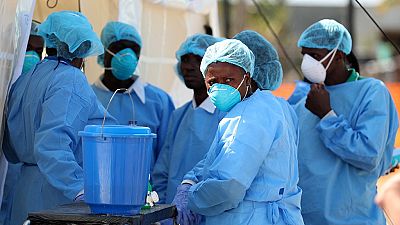


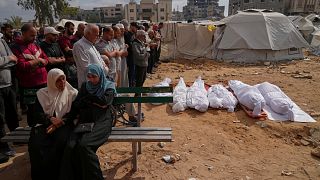


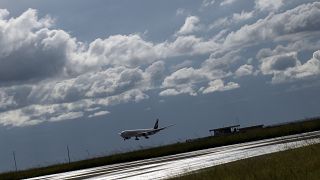
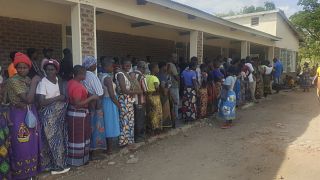
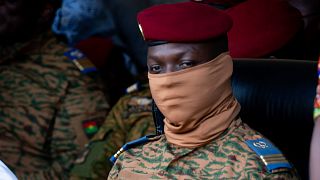
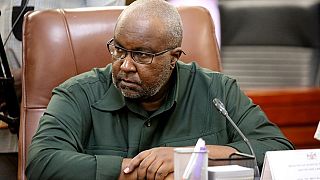

Go to video
Iran: Death toll in port blast rises as crews scramble to stop blaze
Go to video
Tanzania bans agricultural imports from South Africa and Malawi
Go to video
Who will be the next pope? A look at potential candidates
Go to video
Nigerian Court finds club and football federation negligent of Chineme Martins’ death
01:46
UN officials warn of worsening crisis in eastern DRC
Go to video
Protesters in Haiti demand protection against gangs